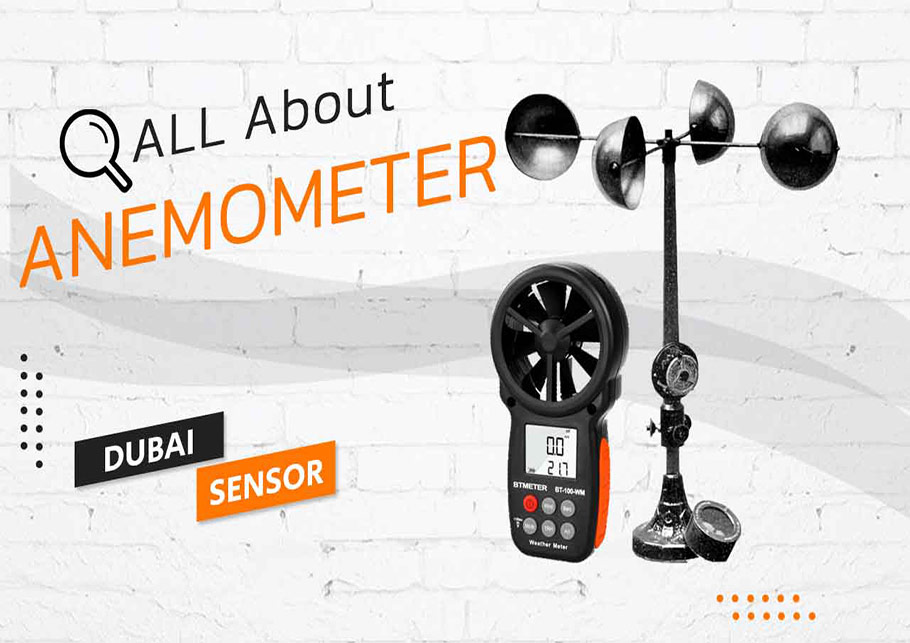Anemometers Unveiled: Recognizing Their Value in Ecological Monitoring and Safety Actions
The role of anemometers in ecological surveillance and safety and security actions is typically underestimated, yet their importance is indisputable. From weather forecasting to aeronautics safety and security, anemometers play a vital duty in offering accurate information that educates decision-making procedures and improves total safety and security.
Background of Anemometers
The evolution of anemometers can be mapped back to the ancient civilizations where basic wind measuring devices were very first used. One of the earliest recognized anemometers was the hemispherical cup anemometer developed by Leon Battista Alberti in the 15th century.
Over the years, innovations in technology led to the growth of more contemporary anemometers, consisting of ultrasonic anemometers and laser Doppler anemometers, offering enhanced accuracy and efficiency in determining wind speed and direction. The background of anemometers showcases an amazing trip of development and progression in the area of meteorology.
Kinds Of Anemometers
Throughout the area of meteorology, numerous types of anemometers have been developed to accurately determine wind speed and direction. One of the most typical kind is the cup anemometer, which contains 3 or four mugs installed on straight arms that revolve with the wind. As the mugs rotate, the rate at which they turn is straight proportional to the wind rate. Another commonly made use of kind is the vane anemometer, which features a tail or fin that straightens itself with the wind direction. This positioning allows the device to identify the wind direction. Sonic anemometers utilize ultrasonic signals to measure wind rate and instructions properly. They are generally utilized in research applications due to their high precision. Hot-wire anemometers operate based upon the principle that the cooling impact of wind on a warmed cable is symmetrical to the wind speed. These anemometers are appropriate for gauging reduced wind speeds with high accuracy. Each kind of anemometer has its toughness and is chosen based upon the particular demands of the tracking task available.
Applications in Weather Forecasting
Having actually discussed the various kinds of anemometers made use of in meteorology for measuring wind speed and instructions, it is necessary to explore their functional applications in the area. Anemometers play a crucial role in weather forecasting by offering precise and real-time information on wind problems (anemometer). Meteorologists make use of anemometers to keep track of wind rate and direction to anticipate weather condition patterns, problem cautions for severe weather condition occasions like twisters, storms, and storms, and evaluate weather for aeronautics safety
In meteorology, anemometers assist in recognizing local and neighborhood wind patterns, which are crucial for predicting weather changes and establishing weather fads. These tools are additionally utilized in research to examine microclimates, city heat islands, and air pollution diffusion. In addition, anemometers are utilized in farming to optimize crop administration techniques, such as watering and pesticide application, based upon wind problems.
Importance in Aeronautics Safety
An important element of making certain aeronautics safety exists in the precise tracking of wind conditions using anemometers. Anemometers play a critical function in aeronautics by giving real-time information on wind speed and direction, aiding pilots in making educated decisions throughout trip, take-off, and landing. Strong and uncertain winds can significantly impact aircraft operations, making it vital for air travel authorities to rely upon accurate wind measurements to make navigate to this website certain the safety of passengers and crew.

In the vibrant atmosphere of air travel, where even minor changes in wind speed and instructions can have profound impacts, anemometers stand as important tools for advertising safe and safe flight.
Role in Environmental Research
Anemometers play a critical function in environmental research study by providing important data on wind rate and direction. By properly measuring wind attributes, anemometers assist scientists analyze the motion of toxins in the air, analyze the influence of industrial emissions, and forecast the spread of impurities in the setting.


Final Thought
In final thought, anemometers have played an important duty in ecological monitoring and security actions. Recognizing the relevance of anemometers is important for precisely gauging wind rate and direction, which is essential for forecasting weather condition patterns, ensuring risk-free aeronautics operations, and conducting environmental researches.
One of the earliest known anemometers was the hemispherical cup anemometer designed by Leon Battista Alberti in the 15th century. Over the years, innovations in modern technology led to the development of more contemporary anemometers, including ultrasonic anemometers and laser Doppler anemometers, providing boosted precision and performance in measuring wind rate and instructions. click to read more Hot-wire anemometers operate based on the concept that the cooling effect of wind on a heated cord is symmetrical to the wind speed. Meteorologists utilize anemometers to keep an eye on wind speed and direction to anticipate weather patterns, problem warnings for serious climate occasions like tornados, hurricanes, and storms, and assess climatic problems for aeronautics safety and security.
Understanding the significance of anemometers is crucial for accurately gauging wind speed and instructions, which is important for predicting weather condition patterns, making certain safe aeronautics operations, and performing environmental researches. (anemometer)